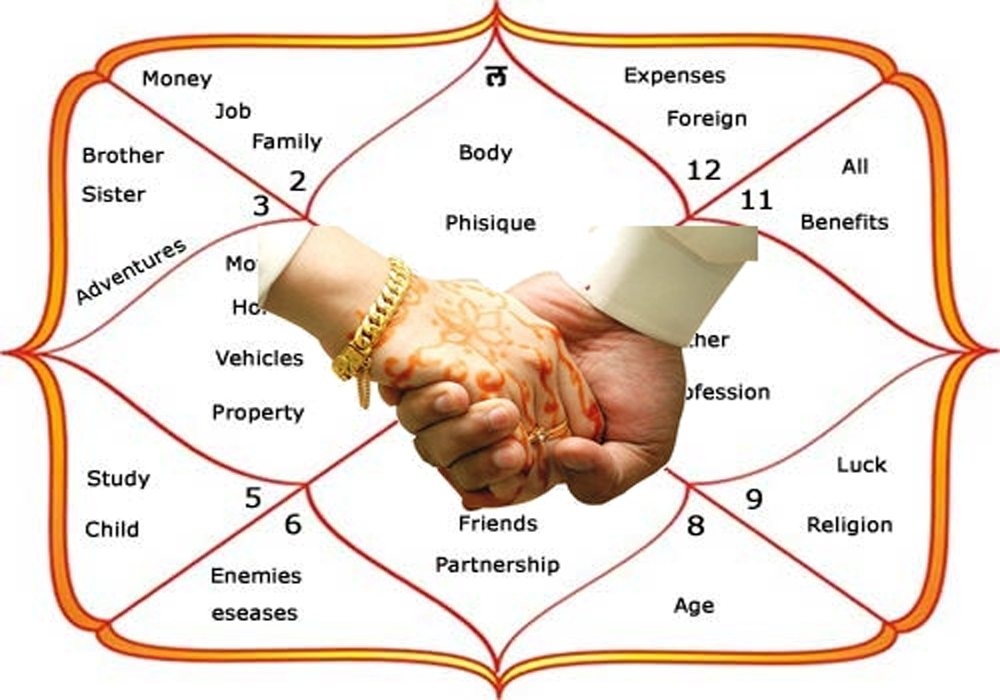Beginner’s Guide to Kundli Reading – Unlocking the Secrets of Your Birth Chart
1. Introduction – What is a Kundli?
In the world of Vedic Astrology, your Kundli (also called Janam Kundli or birth chart) is your cosmic fingerprint. It’s a celestial map created based on your exact birth date, time, and place, capturing the positions of planets, stars, and zodiac signs at that very moment.
Think of your Kundli as a snapshot of the universe the second you were born. Just as no two fingerprints are alike, no two Kundlis are identical — even twins have subtle planetary differences due to seconds of birth time variation.
A Kundli contains twelve houses, each representing different areas of life like career, relationships, health, wealth, and spiritual growth. The planets, zodiac signs, and houses work together to form a highly detailed personality and life blueprint.
-
Sun Sign: Your core identity, life purpose, and self-expression.
-
Moon Sign: Your emotional nature, intuition, and inner world.
-
Ascendant (Lagna): The way you present yourself to the world.
Why Learn Kundli Reading?
For beginners, understanding your Kundli is like learning to read the manual of your own life. You discover:
-
Your strengths and weaknesses
-
Why certain patterns keep repeating
-
Best times for career, relationships, and personal growth
-
How planetary transits might influence you in the future
The beauty of Kundli reading is that it’s not limited to predictions. It’s a self-discovery and self-improvement tool. By understanding your cosmic design, you can make better decisions, choose supportive environments, and align with favorable planetary periods.
2. Essentials for Creating a Kundli
Before you can read your Kundli, you need one created accurately. Even the most skilled astrologer cannot interpret a chart correctly without the right data.
The Three Key Details:
-
Date of Birth – Even one day off can place planets in entirely different houses.
-
Exact Time of Birth – A difference of just 4 minutes can change the Ascendant and sometimes planetary positions.
-
Place of Birth – Determines the local time zone and geographical coordinates, affecting the chart’s orientation.
Tip for Beginners: If you’re unsure about your exact birth time, consult your birth certificate, hospital records, or close family members. For extreme accuracy, you can undergo a birth time rectification by an experienced astrologer.
How Astrologers Calculate a Kundli
Traditionally, Kundlis were drawn by hand using Panchang (Hindu astronomical almanac) and mathematical formulas. Today, software and apps can instantly calculate your birth chart.
Still, the interpretation remains a skillful human art — machines can show positions, but meaning comes from understanding.
3. Understanding the Kundli Layout
Once your Kundli is prepared, you’ll see a diagram divided into twelve segments (houses). The style of this diagram depends on the chart system:
Chart Styles:
-
North Indian Style – Diamond-shaped chart with fixed house positions and rotating signs.
-
South Indian Style – Square-shaped with fixed zodiac positions and rotating houses.
-
East Indian Style – Unique hybrid layout used in certain regions.
Regardless of style, the core concept is the same: 12 houses, 12 zodiac signs, and planets placed within them.
Key Symbols in a Kundli
-
Numbers (1–12) – Represent the zodiac signs (Aries = 1, Taurus = 2, etc.).
-
Planet symbols – Sun ☉, Moon ☽, Mars ♂, Mercury ☿, Jupiter ♃, Venus ♀, Saturn ♄, Rahu ☊, Ketu ☋.
-
Degrees – Show exact planetary positions within a sign.
The Ascendant (Lagna) is the starting point of the chart. From there, houses are counted anti-clockwise (in North Indian charts).
4. The 12 Houses – The Foundation of Kundli Reading
The 12 houses are like rooms in your cosmic home. Each governs specific life themes.
| House | Represents |
|---|---|
| 1st (Lagna) | Self, appearance, personality |
| 2nd | Wealth, speech, family |
| 3rd | Courage, siblings, communication |
| 4th | Home, mother, comforts |
| 5th | Creativity, children, romance |
| 6th | Enemies, debts, health |
| 7th | Marriage, partnerships |
| 8th | Transformation, inheritance, secrets |
| 9th | Luck, higher education, religion |
| 10th | Career, reputation |
| 11th | Gains, social circle |
| 12th | Losses, expenses, spirituality |
Example for Beginners: If Jupiter is in the 10th house, career growth is often supported by knowledge, teaching, or spiritual guidance




